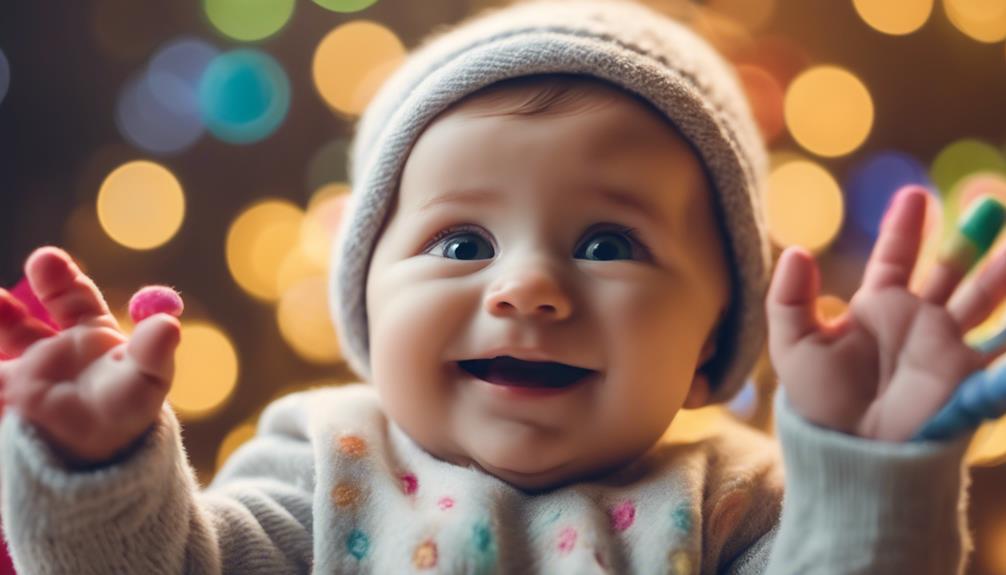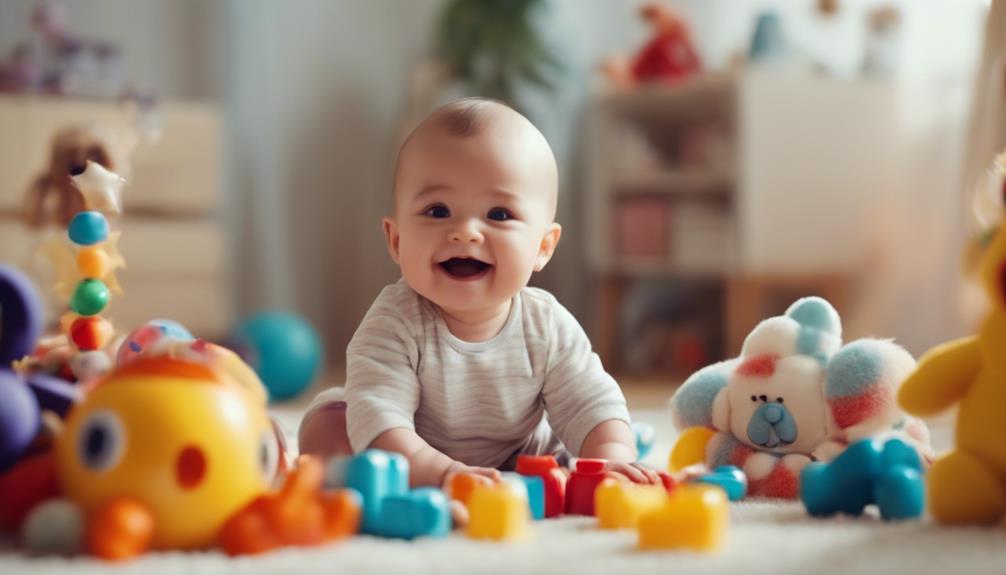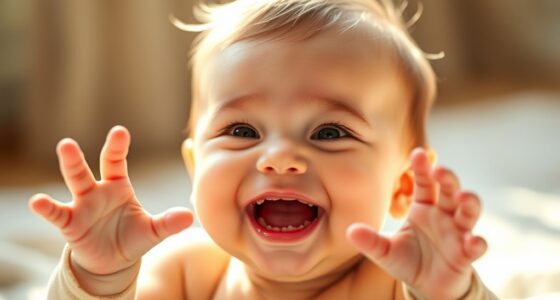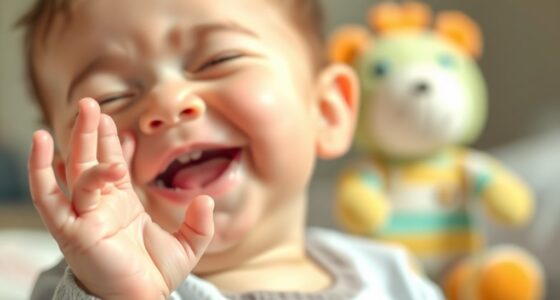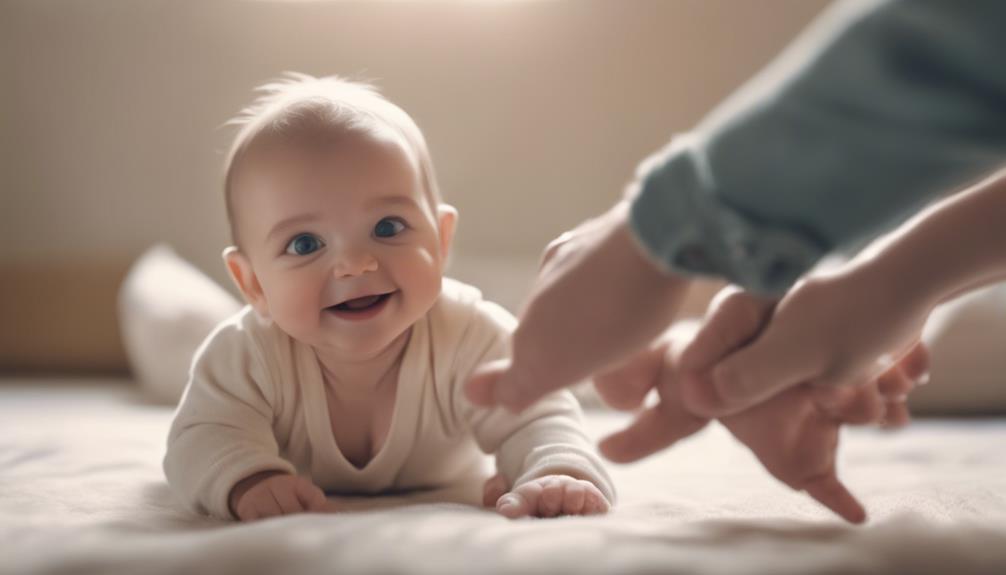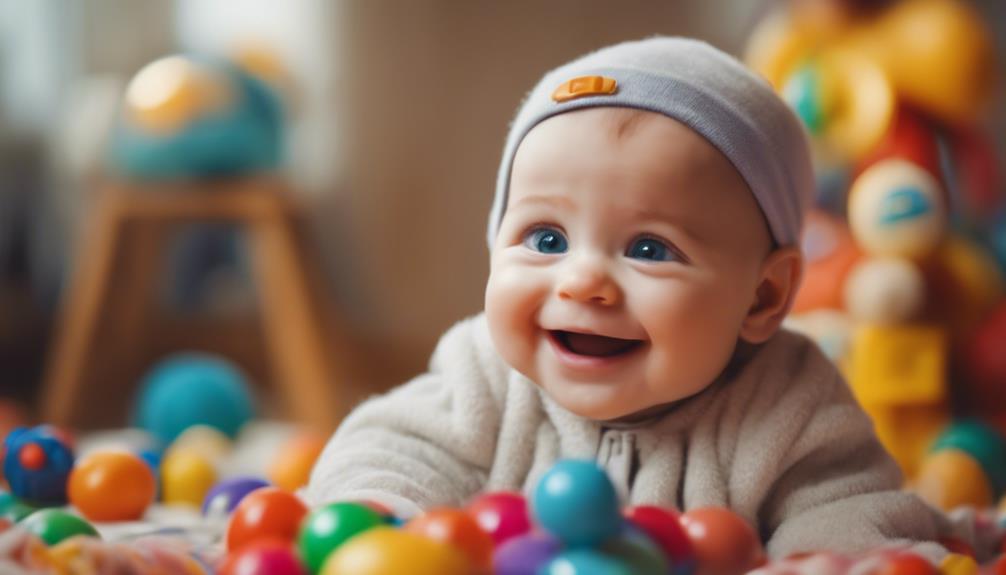If your baby is smiling big, making eye contact, and displaying enthusiasm during playtime, these are clear indications of happiness and contentment. Positive expressions such as smiling, bright eyes, engaging eye contact, babbling, and enjoying interactions with their surroundings indicate a happy baby. Additionally, relaxed body language, reaching out for objects, calm responses to soothing techniques, and being in a secure environment all contribute to a happy baby’s well-being. Recognizing these cues allows you to connect with your little one more deeply, promoting their emotional happiness and security.
Key Takeaways
- Baby smiles, laughs, and shows excitement.
- Maintains eye contact and displays positive facial expressions.
- Engages with surroundings, reaching for objects.
- Responds positively to soothing techniques.
- Shows comfort, security, and trust in caregivers.
Facial Expressions
To gauge your baby's happiness, observe their facial expressions closely for signs of joy and contentment. Babies are incredibly expressive and use their facial expressions to communicate their feelings. A key indicator of a happy baby is their smile, which typically emerges between 4-10 weeks of age.
As your baby grows, you may notice them laughing and showing excitement in response to various stimuli around 3-6 months old. These positive facial expressions, like smiling and bright eyes, are clear signals of a happy baby.
When your little one smiles or laughs, it indicates a sense of contentment and joy in their world. By paying attention to these subtle cues, you can gain valuable insights into your baby's emotional well-being and overall happiness.
Body Language
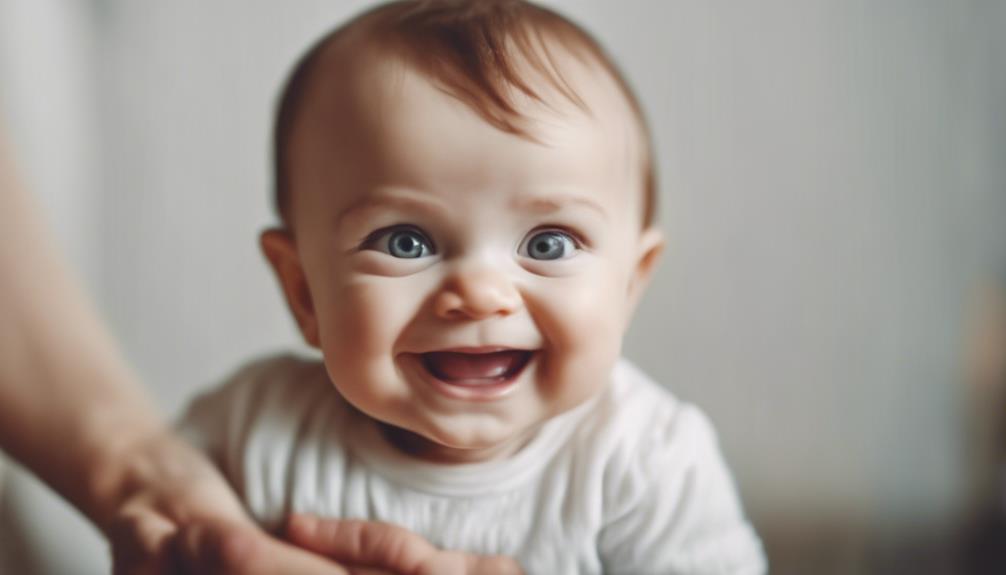
Observe your baby's body language closely to decode their happiness levels and emotional state. A happy baby will often display attentive eye contact, showing interest in their surroundings. Even very young babies can exhibit good signs of happiness through smiling, grinning, and lighting up their faces. Additionally, vocalizing, squealing, and babbling are common indicators of a happy and engaged baby. Pay attention to how your little one responds during nursing or meal times; enjoying feeding with pleasure can be a positive body language cue.
Furthermore, engaging in toy play is another strong indicator of a happy baby. When your baby shows enthusiasm and interest in playing with toys, it demonstrates that they're aware of their surroundings and are actively engaging with their environment.
Interaction With Surroundings
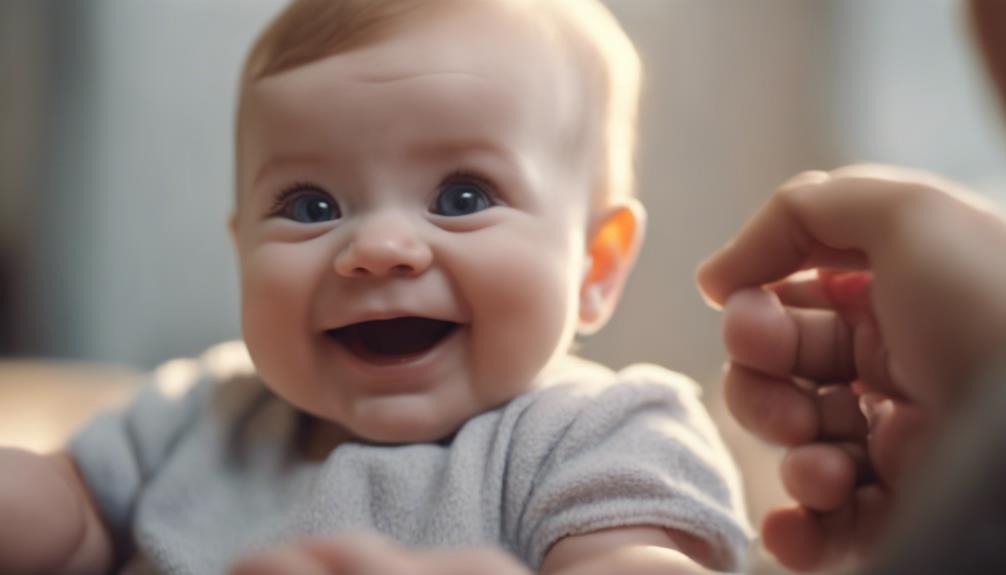
Observing how your baby interacts with their surroundings to gauge their level of happiness and engagement is crucial. To understand their emotional state, it's important to pay attention to how your little one responds to stimuli and engages with the environment.
When babies are happy, they often exhibit curiosity and interest in their surroundings, showing signs of alertness and engagement. They may reach out or grab objects, indicating a positive interaction with their surroundings. Additionally, happy babies may display contentment through relaxed body language, such as smooth movements and a calm demeanor.
One of the first signs that your baby is happy is their willingness to turn toward stimuli and even though they mightn't be able to speak yet, their actions speak volumes. As your baby begins to explore the world around them, watch for expressions of joy like giggling, laughing, and babbling, which are clear indicators of a happy baby interacting with their surroundings.
Response to Soothing Techniques
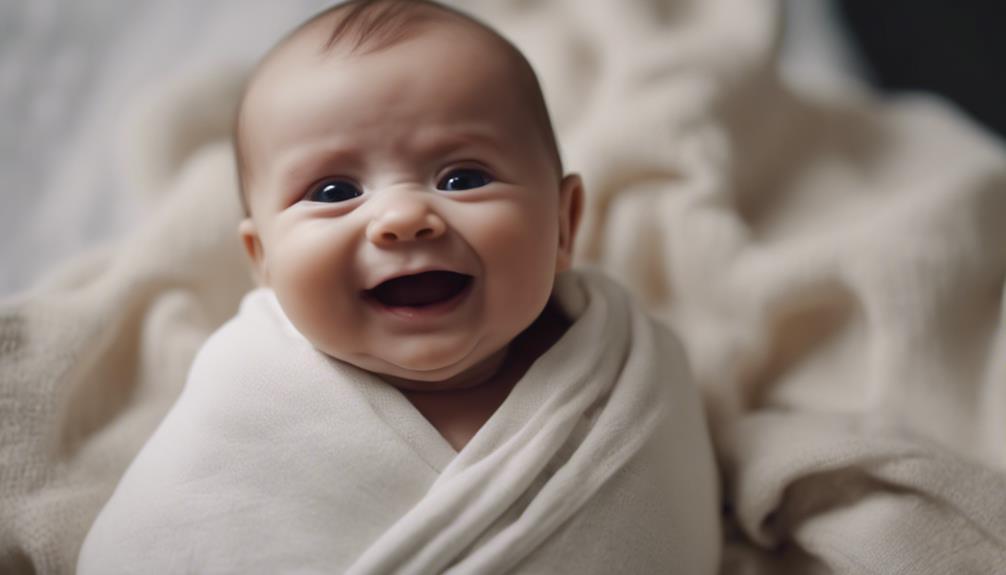
How can you tell if your baby is happy based on their response to soothing techniques?
Happy babies often display positive reactions to soothing methods such as gentle rocking or soft singing. When comforted by caregivers, they typically exhibit calm body language, appearing relaxed and content. Contentment and relaxation may be evident when they're held or cuddled, showcasing their happiness.
Additionally, smiling, cooing, and making eye contact during these soothing moments are common signs of a happy baby. Furthermore, babies who swiftly calm down and cease crying in response to comforting gestures are likely expressing their happiness.
Observing your baby's responses to soothing techniques can provide valuable insights into their emotional state and overall well-being. By recognizing these indicators of happiness, you can strengthen your bond with your little one and foster their feeling of security and love.
Overall Comfort and Security
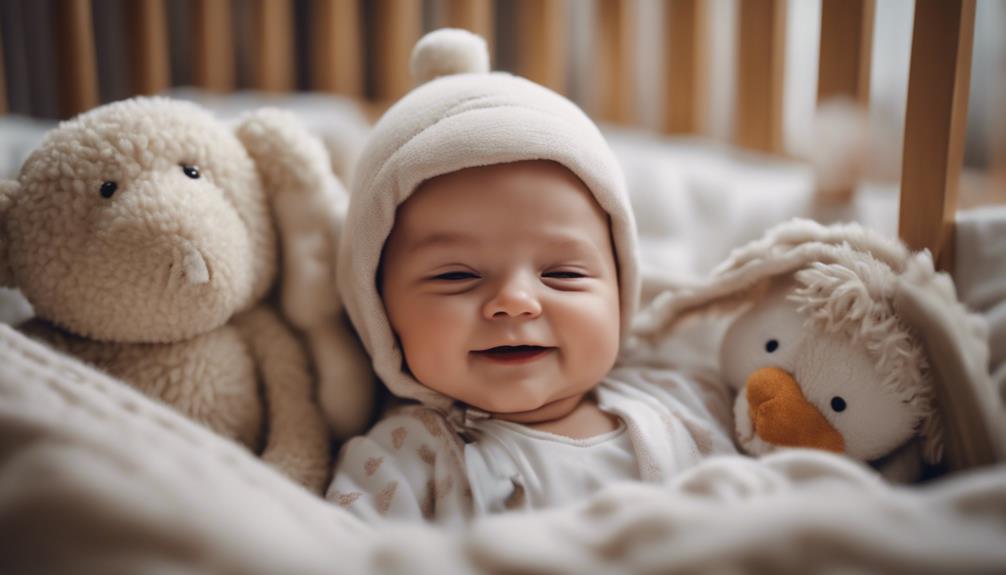
To gauge your baby's happiness, look for signs of overall comfort and security in their demeanor and interactions with you. A happy baby often exhibits relaxed body language, like open hands and soft eyes, along with content facial expressions, such as smiles and coos. These behaviors indicate a sense of security and comfort in their environment.
Vital attachment is essential for a baby's well-being, showing in their desire for closeness, trust in caregivers, and positive responses to interactions. Babies who are well-fed, well-rested, and physically comfortable are more likely to display happiness and contentment. Feeling safe and loved contributes to their relaxation, frequent smiling, and engaging in playful interactions.
Creating a secure and nurturing environment fosters emotional well-being, leading to a happy and thriving little one. By ensuring your baby feels secure and comfortable, you're laying the foundation for their overall happiness and development.
Frequently Asked Questions
What Are the Signs of a Happy Baby?
You notice a happy baby by their joyful giggles, bright eyes that light up at your presence, and peaceful interactions. They smile spontaneously, engage with you, and show contentment through their calming interactions with caregivers.
What Determines a Happy Baby?
You determine a happy baby by observing their responsiveness, engagement, and contentment. Positive interactions with caregivers, relaxed body language, and playful behavior are key indicators. Did you know that 80% of a baby's brain is developed by age 3?
How Do I Know My Baby Is Happy to See Me?
You know your baby is happy to see you when they smile, reach out, or make joyful noises. They may seek your cuddles, maintain eye contact, or giggle in response to your presence.
How Do I Know if My Baby Is Satisfied?
Wondering if your baby is satisfied? Look for contentment through feeding and sleeping patterns. Spontaneous smiles, laughter, and playful interactions indicate a happy baby. Developing a sense of humor around 1 year is a positive sign.
Conclusion
To wrap things up, by paying attention to your baby's facial expressions, body language, interactions with their surroundings, response to soothing techniques, and overall comfort and security, you can easily determine if they're happy.
Just like a blooming flower that turns towards the sun for warmth and light, a happy baby will radiate joy and contentment in their every movement and expression.
Trust your instincts and observations to guarantee your little one's happiness and well-being.

